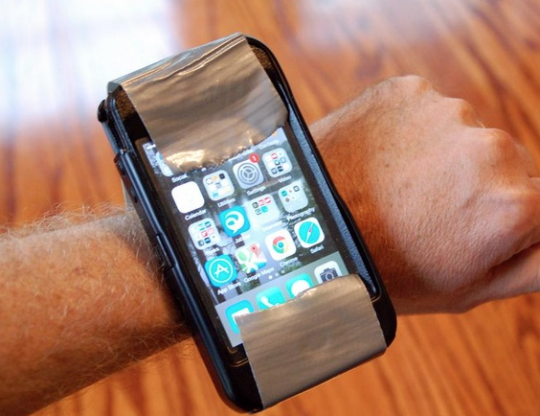
Apple and Google might be heated rivals in everything from maps to music but – if recent reports are to be believed – they are united in one very important characteristic: both have “failed” in the world of wearables.
The Google Glass Explorer programme – designed to ease forward-thinking consumers into a glasses-wearing world of wearable tech nirvana – shut down in January, after failing to take off commercially (the press talk of “Glassholes” didn’t really help, either).
The Apple Watch, meanwhile, has recently seen its press coverage change from fawning devotion to scepticism, with a recent New York Times piece suggesting that the fact that Facebook and Snapchat hadn’t made apps for the Apple Watch “underscores the scepticism that remains in the technology community about the wearable device”.
Ouch. It’s not that Google and Apple never fail – Google Health and iTunes Ping prove they are not immune to high-profile flops – but the idea of two of the biggest, most consistent tech companies drawing a blank with wearables, aka the next big thing in technology, makes nervy reading for anyone in the tech industry.
You’ll notice, though, I say “failed”. I don’t think either company has necessarily failed in the wearable space, whatever you might read.
To start with Google Glass, probably the most straightforward of the two stories. The product – an optical head-mounted display that may have looked a little silly but could actually do quite a lot of useful things, such as giving directions and taking pictures – was met with great acclaim when it was first seen in public in late 2012 / early 2013.
This intensified when Google opened its Glass Explorer program in April 2013, selling Glass to a limited number of consumers who essentially had to sell themselves to Google for the right to make a purchase. It was only when the device went on general sale – in a “more open beta” – a year later, that the tide of public perception seemed to turn and in January 2015 Google closed the Explorer programme.
So was Glass a failure? Maybe – if the story had ended there. Instead, Google is now working on an Enterprise Edition of Google Glass with hardware improvement that are intended to appeal to workplace / business users. This, arguably, is a better fit for a pricey if potentially very useful piece of gear and it may well pay off, in which case the well-worn narrative of the “failure” of Google Glass will have to be re-adjusted.
How about the Apple watch? Is the New York Times right that a lack of big-name apps suggests industry scepticism. Possibly. But does this constitute a failure? No.
The fact is, it’s far too early to say. The Apple Watch only started shipping at the end of April, three months ago. It’s still not even available in many countries.
More importantly, Apple hasn’t given out any sales figures for the device. In a phone call with financial analysts following the release of Apple Q2 figures, Apple CEO Tim Cook said this was “ a matter of not giving our competition insight [on] a product that we worked hard on”, a slightly odd way or reasoning. Nevertheless, he revealed that, “Sales of the watch did exceed our expectations, and they did so despite supply still trailing demand at the end of the quarter.”
Apple’s decision not to give out numbers may sound a little suspicious to outsiders, leaving us at the mercy of analysts’ guesses (which tend to equate to around 4m watches sold in Q2).
But ask yourself this: what number of Apple Watches sold in the first quarter would be a success?
800,000? That’s the number of Galaxy Gear smartwatches Samsung apparently shipped in 2013. One million? That’s the number of Pebble Smart Watches sold up to December 2014. 12.6m, maybe – the number of iPads sold in Q2 2015?
We simply don’t know. So why would Apple release sales figures that would leave the Apple Watch open to premature accusations of failure? What would it have to gain?
Google and Apple haven’t failed in the wearables market, then. Nor, though, have they succeeded. The same could be said for the entire wearables business. Wearable devices aren’t like a new iPhone or MacBook – products that we know and love. They are a new kind of technology and we still don’t what their effect will be.
In this, the Apple Watch is more like the iPad than the iPhone. Smartphones were already a well established business when the iPhone launched in 2007, while the tablet computer was still in its infancy when the first iPad appeared in April 2010.
The iPad went on to sell 3m units in its first 80 days, widely seen as a triumph. According to Cook the Apple watch has surpassed this. “The Apple Watch sell-through was higher than the comparable launch periods of the original iPhone or the original iPad,” he told analysts in the same phone call, albeit without giving numbers. And yet, still, the Apple Watch is seen as a failure.
Into this debate come new predictions of how the wearables market could develop. In a note to clients this week Piper Jaffray’s Erinn Murphy and Christof Fischer estimate that the wearable tech category will grow from 21m units in 2014 to 150m units in 2019, a 48% compound annual growth rate.
Murphy and Fischer make a comparison between wearables and clothing. “To contextualise these category growth rates, the apparel industry grows in the flat to low-single digit range, handbags are growing in the low-single to mid-single digit range and footwear is a low- to mid-single digit growth category,” they write.
They then make a comparison with tablets. “We believe that tablet adoption is a good indicator of wearable adoption because tablets and wrist wearables do not generally require network contracts and are generally complementary to a computer or smartphone, respectively,” they write.
On the basis of tablet adoption, they extrapolate a market of 230m to 385m wearable devices, with 20% to 30% adoption among the 1.08bn people of 15 years and older living in developed nations.
Interesting these figures may be. But the comparisons Murphy and Fischer raise are slightly confusing. What exactly are they saying here? Is the wearable technology market like clothing? Or tablets? Or some kind of hybrid of the two?
My point here is not to undermine what Murphy and Fischer write. Far from it. Instead, I think their note shows how difficult it currently is to accurately assess the potential of the wearable market.
Should we compare wearable technology to clothing? Tablets? Watches? Jewellery? Smart phones? Should we look at the amount of joggers, who might want to track their health? Or the number of surgeons, who would benefit from Google Glass?
We still don’t really know. And we won’t until the wearables market has time to develop.
So please, for the moment, let’s stop calling the Apple Watch a failure.
@WearableTech
